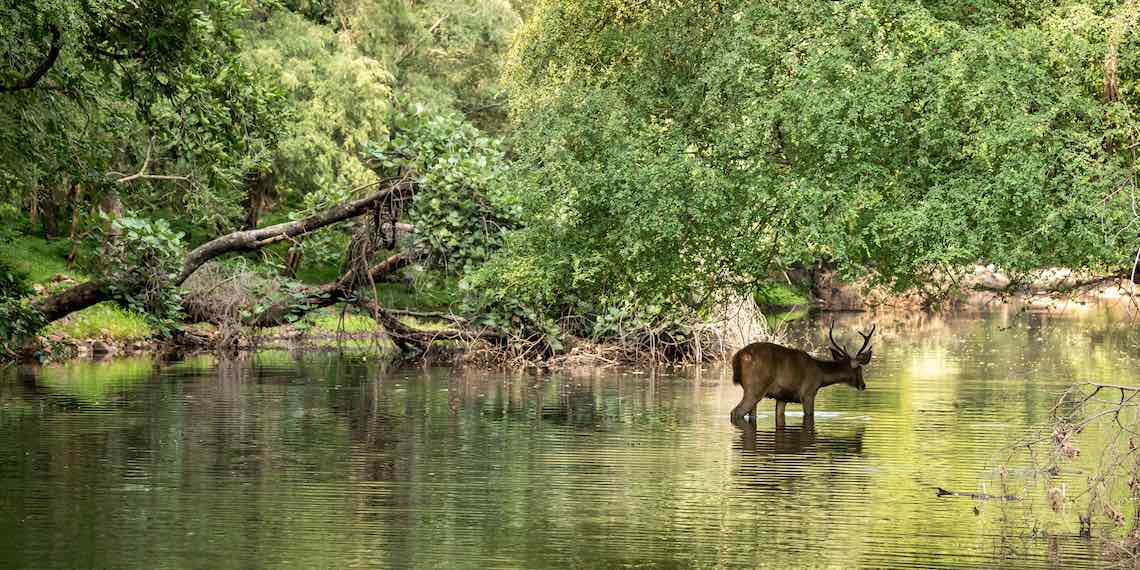What a 24-year study of animal scat taught Melbourne Water

Unlike many other utilities, Melbourne Water is able to deliver drinking water from protected forested catchments, secluded from people and farm animals such as cattle.
Now, a 24-year-long study has shown another advantage to this high-quality water source: low levels of the chlorine-resistant pathogen Cryptosporidium. After collecting and analysing more than 11,000 samples of animal faeces, the researchers were able to identify Cryptosporidium in just 2.2% of the collected scat — and only 0.2% is human infectious.
“The main thing we're taking from it is that having these protected systems keeping people and — in the case of Crypto, especially — cattle and other animals out of there, [is] it works, and it actually gives you a benefit,” said Dr Shane Haydon, Melbourne Water’s Manager of Drinking Water Research.
“Melbourne Water's had this long history of these sorts of protected catchments, and they're worth keeping protected if you can.”
According to Haydon, the low levels of pathogens come despite the catchments containing sambar deer, which had been suspected as a source of Cryptosporidium because they spend time in or near water and, like cattle, are ruminants.
“We were probably expecting [the levels] to be a bit higher than they are, but not hopefully like you would expect in an open catchment with lots of cattle,” he said. “Lower than that, but probably not as low as they actually are.”
This was a surprising finding for the researchers, but it reflected the low levels of Cryptosporidium the utility had already been seeing in its water-based sampling, which Haydon described as “notoriously difficult”.
“We basically weren't detecting any at all,” he said.
Sampling faecal material offers greater accuracy, however, because it means gathering data from closer to the source of the pathogen.
“The theory was that if you go to the scats and you find an ill animal, then you've got more chance of getting a decent sort of signal,” Haydon said.
“There's quite a large attenuation between poo hitting the ground and going through the grass and actually getting into the river and then it gets diluted in the reservoir. So if you can't find it in the scat, then you're almost certainly not going to find it in the drinking water.”
Clean and natural
This reassurance that the catchments are free of significant Cryptosporidium infections means that Melbourne Water can continue to deliver untreated water, which Haydon says offers two benefits.
“The first one is it's significantly cheaper,” he said. “Water coming out of the Silvan system, which is the Upper Yarra or the O’Shannassy — where you don't have filtration, where we just add chlorination to get rid of any bacteria and viruses, and there's a fluoride addition and some pH adjustment with lime — it's very low cost per megalitre.”
The other factor was that the public dislikes excessively treated drinking water.
“People don't like having chemicals in their water or having the water go through chemical processes, so there's a customer preference for drinking water as close to ‘natural’ as possible,” Haydon said.
“[And] the risk is lower. If you have a disinfection failure in a supply where there's very little risk anyway, it's not good and it shouldn't be happening. But it's very different to having a disinfection failure somewhere where the water's got lots of contamination in sewage overflows or lots of storm water.”
Reducing contamination
Along with deer, Melbourne Water’s study also monitored pathogen levels in other wildlife, including kangaroos, foxes, wallabies, rabbits, waterfowl, emus and wombats. Over the course of time, the team’s efforts grew more accurate, but its first efforts were suggesting Cryptosporidium existed in greater numbers than it actually did.
“When we sort of started, because it's picking up faeces, people are not that excited about it. So we used a little tiny garden shovel and we picked up samples and put them into Ziploc bags,” Haydon said.
“We weren't cleaning the little shovel down in between samples, so you're cross-contaminating all the samples.”
Today, the team is more methodical in its approach, using single-use gloves and single-use bags.
“Then when it gets back to the lab, each sample is treated separately,” Haydon explained. “It's just really about stopping cross-contamination.”
Haydon says the next step is to move the collection and analysis out of the research stage and to integrate it into Melbourne Water’s usual monitoring activities.
“The method is not the normal approved method for drinking water,” he said.
“But we will continue to do this because one of the reasons we continued with it is if you do get changes in the population due to people getting [into the catchments] or more cattle or some variant that happens to do well in deer, then you want to know it's there.”


